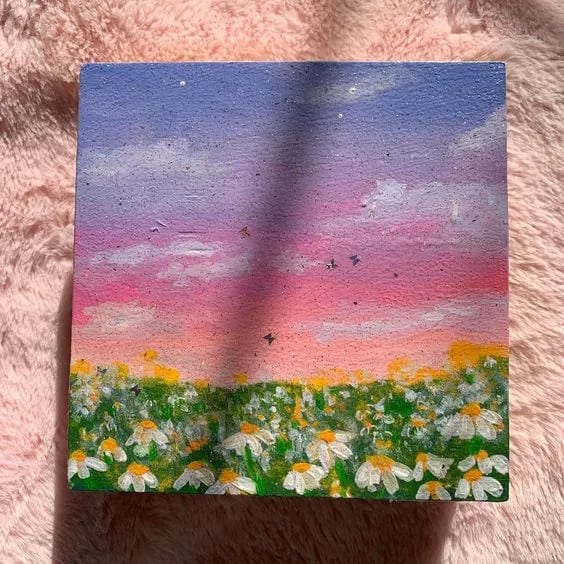Unleash Your Child’s Creativity with Easy Art Paint Ideas
Welcome, marvelous mamas and playful papas! Are you looking for a splash of fun that will brighten up your child’s day and unleash their inner Picasso? Look no further! Today, we are diving into the colorful world of easy art paint ideas, perfect for little hands and big imaginations. So, roll up those sleeves, get your paintbrushes ready, and let’s create some magical masterpieces together!
Why Art Matters for Little Ones
Before we dip our brushes into the vivid palette, let’s chat about why painting is more than just a fun pastime. Engaging in art activities is a fantastic way for children to express themselves, improve fine motor skills, and even boost their emotional intelligence. It provides a sensory experience that encourages playful learning and cognitive development. And you know what? It creates the perfect opportunity for family bonding. So, let’s spread out some newspaper, and prepare for some giggly good times!
Setting the Scene for Messy Masterpieces
Now, let’s prepare our art studio, shall we? Gather the following essentials:
- Paint: Washable, non-toxic paints are your best friend, especially when tiny hands are involved. You can opt for watercolors, finger paints, or acrylics for varied textures.
- Brushes: A variety of sizes will encourage different stroke styles. Don’t forget sponges and even old toothbrushes can make for interesting textures!
- Canvas: Anything from paper to cardboard boxes, and even rocks can serve as the backdrop for their creative expressions. Sometimes, the most unexpected materials make for the best canvases!
- Protection: Avoid the stress of stains with aprons or old t-shirts. Cover work surfaces with newspaper or a plastic sheet to catch stray splatters.
- Cleanup: Have a washbasin or wipes on hand for easy clean-up. Remember, messiness is part of the fun, but it doesn’t have to be part of the aftermath!
Fun and Easy Painting Ideas to Start With
Now that we’re all set, here are some delightful painting ideas to spark that creativity:
- Finger Painting Fun: There’s no need for brushes when fingers can dance across paper creating bold shapes and blends. Encourage your little ones to squish, swirl, and stamp to their heart’s content.
- Bubble Wrap Bonanza: Bubble wrap isn’t just for popping! Paint over it and press onto paper for a fantastically textured effect. It’s like popping bubbles and painting at the same time!
- Splish-Splash Art: Fill squirt guns with diluted paint and let your kids spray their canvases outdoors. This is a fabulous way to combine sun, exercise, and art!
- Nature’s Paintbrushes: Use leaves, flowers, and twigs as natural brushes. Dip them in paint and see what patterns emerge. Nature and art are a perfect pair.
- Marble Madness: Drop marbles in paint and then roll them around inside a box lined with paper. This is a fun way to explore color mixing and cause and effect!
Remember, the goal is to have fun and let your children explore their creative instincts. There’s no right or wrong in art, just joyous expression. As Bob Ross would say, we don’t make mistakes, just happy little accidents!
Stay tuned, as we’ve barely skimmed the surface of the paint pot! In the upcoming sections, we’ll delve into themed painting projects, tips for displaying your child’s artwork, and how to encourage an ongoing love for the arts. Embrace the spills and thrills of art, and you’ll soon find your home adorned with colorful memories of your child’s blossoming artistic journey.

5 Things Parents Should Know in Preparing for Easy Art Paint Ideas
Embarking on an artistic adventure with your little ones is a joyous and sometimes messy endeavor. Let’s ensure that it’s a good kind of mess, with these five insightful tips:
1. Safety Comes First
Safety is the golden rule in any art project. Always choose paints that are labeled non-toxic and safe for children. Keep a watchful eye to prevent any paint from being ingested or finding its way into little eyes. Think ahead about proper ventilation if you’re using materials that could emit fumes and always store your art supplies securely after use.
2. Embrace the Learning Curve
Different art projects teach different skills. Simple paint-brush strokes can be a lesson in dexterity, whereas mixing colors can introduce basic concepts of color theory. Each painting session is a hidden lesson waiting to be discovered by your budding artists. So, let them experiment and learn at their own pace.
3. Prep for Success (and Mess)
Preparation can make or break the painting experience. Have everything ready before your child begins to paint to keep their focus on creativity rather than logistics. Keep in mind, the messier the setup, the less likely your children are to explore freely. Simple, well-organized spaces can lead to the most successful creativity sessions.
4. Set Realistic Expectations
It’s important to approach art projects with an open mind. A child’s interpretation of a project might be completely different from the example you have in mind, and that’s perfectly okay! Encourage your child’s unique vision and remind them that there is beauty in every attempt at creation.
5. The Art of Cleanup
A streamlined cleanup process is vital to keep both parents and kiddos happy. Have a dedicated washbasin or a pile of wipes available for quick hand cleaning. And don’t forget how water-activated some paints are for easy wash-out from fabrics or surfaces. The easier the cleanup, the more likely you and your children will want to repeat the art experience.
By keeping these pointers in mind, you’ll be well-equipped to navigate the joyous, sometimes chaotic, but always rewarding world of children’s art. Whether you’re watching them discover new textures, or marveling at their abstract interpretations of the world, you’re not just making art, you’re making memories. Now let’s turn those sleeves up, get those brushes out, and make this art extravaganza one for the books!
See more great Things to Do with Kids in New Zealand here. For more information see here
Disclaimer
The articles available via our website provide general information only and we strongly urge readers to exercise caution and conduct their own thorough research and fact-checking. The information presented should not be taken as absolute truth, and, to the maximum extent permitted by law, we will not be held liable for any inaccuracies or errors in the content. It is essential for individuals to independently verify and validate the information before making any decisions or taking any actions based on the articles.




